Comics Can Enliven Learning across Content
A MiddleWeb Blog
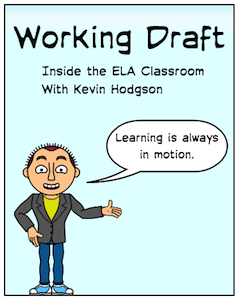
Within the covers of this collection, curated by Josh Elder, are examples of how graphic storytelling can connect nicely to teaching standards across various content disciplines.
For those teachers who might still be a bit doubtful about the power of the literacies of comics, Reading with Pictures might be the perfect step into the world of graphic storytelling.
As Elder, founder of the non-profit Reading with Pictures organization, explains in the opening, the impetus for this collection was a call from teachers and parents as he traveled around, as a sort of ambassador of comics:
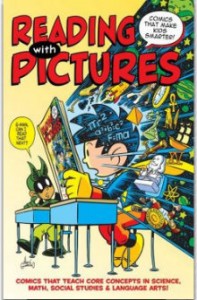
Elder even provides a teaching guide to go along with this book-length collection of illustrated stories solicited from a wide range of graphic storytellers. The downloadable guide is free. The 146-page PDF even has a bonus graphic story — a history of comics in the classroom by professional comics authors Fred Van Lente and Ryan Dunlavy — along with plenty of lesson plan ideas, student activities and learning objectives tied into the Reading with Pictures book and stories.
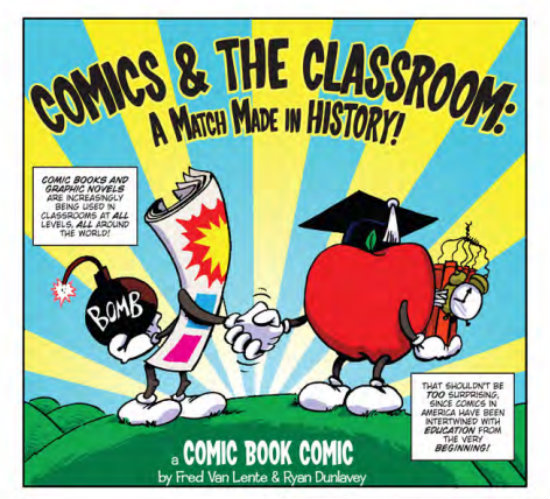
A great way to dive into the online guide
What’s in the book
Elder’s graphic story collection opens with a one-page comic by acclaimed, award-winning graphic novelist Gene Luen Yang, who tells his own story of being a high school teacher who found a way to merge his love of making comics with his love of teaching, and this message by Yang (whose identity story – American-Born Chinese – is making inroads in many literature classes) sets the stage for the stories that follow. In a smart move, contributor Tracy Edmunds also provides an entire page on “How to Read a Comic” that would be a valuable starting point for teachers and students alike (it’s also included in the free guide).
The collection is then divided up into curriculum sections. To be frank, some stories are stronger than others, although the varied art design of the entire collection provides an interesting overview of how individual writing and drawing styles make for a unique visual reading experience (or, if you flip the discussion, a writing experience). There are no real duds here, but some stories have more drawing power than others.
Science, math and history
One of my favorites is “The Adventures of Doctor Sputnik: Man of Science” by Roger Langridge that is both informative and playful, and fully engaging with scientific information about Newton’s Laws of Motion that never feels too preachy to the reader. There’s a nice level of goofy humor to the tale of Doc Sputnik and his sidekick, Spud, who seek to use Newton’s ideas to escape the confines of Earth.
In the math section, a story that plays off and makes fun of Pokemon obsession dives into the world of mathematical probability. “Probamon: Gotta Chance ‘Em All” by Geoffrey Golden and Nate Pride has a Mad Magazine-ish approach to storytelling that both honors the world of collecting Japanese pop culture icons and skewers the idea at the same time.
Dear to my own writing heart is a sweetly told and deftly illustrated story by Katie Cook about “The Power of Print.” Cook provides a historical context for the Gutenberg printing press and how it transformed literacy in the world. Her history-flavored tale traces the emergence of newspapers, typewriters, printers, and now computers and digital devices, right back to the powerful idea of the printing press.
The Social Studies section offers the final story in the collection, “Action President,” by Fred Van Lente and Ryan Dunlavey, which brings the reader into the story of George Washington, reaching beyond the cherry tree myth.
This comic biography of Founding Father Numero Uno pulls out all of the stops of graphic storytelling, with jokes unfolding in the panels, great artistic work, funny pokes at historians, and in the end, a much more nuanced rendering of Washington’s role in the American Revolution and his reluctant emergence as the first president of a country still in development. You have to read this one carefully, and closely (to use one of the current jargon terms of education), to fully appreciate the rich amount of historical information here.
Learning, with all the fun left in
While the reality is that this 184-page book, at almost $20 a pop ($9.99 for e-version), probably costs too much for a class set to be purchased, a single edition could be a resource for the classroom, or perhaps for use with a projector for showing the artwork and storytelling.
At the very least, Elder’s mission to show the power of comics in connection with learning stands tall here, and I would say he surely answered the call of those parents, teachers and administrators wondering how best to connect young people’s passion for graphic stories with learning goals, without sucking all the fun out of it.
(Reading with Pictures is tagged “grades 3-6” but could easily stretch into higher grades.)

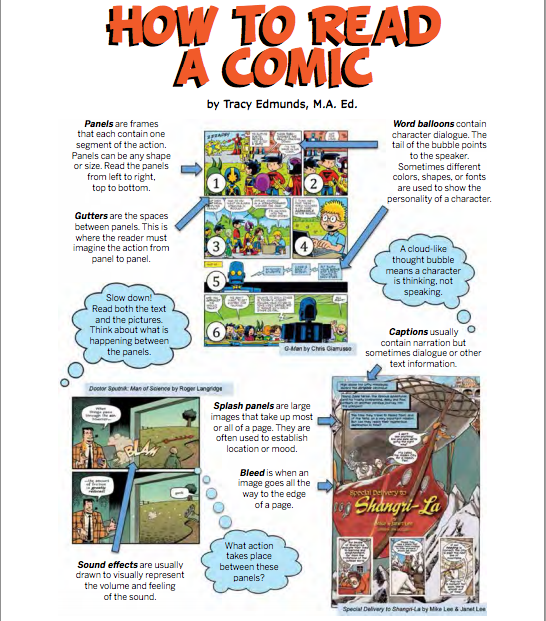
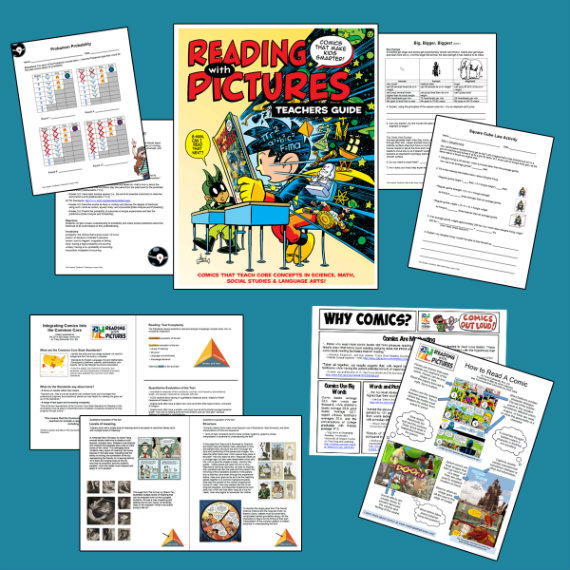


































Nice! We use quite a few comics and jokes in our college readiness series. Even tho the subjects are serious, there’s no reason you can’t infuse a little humor. I believe you can snag students’ attention by beginning lesson presentation with humor, and sometimes even poking a little fun at the topic. You can see some of our comics at http://www.facebook.com/C21Student?ref=bookmarks